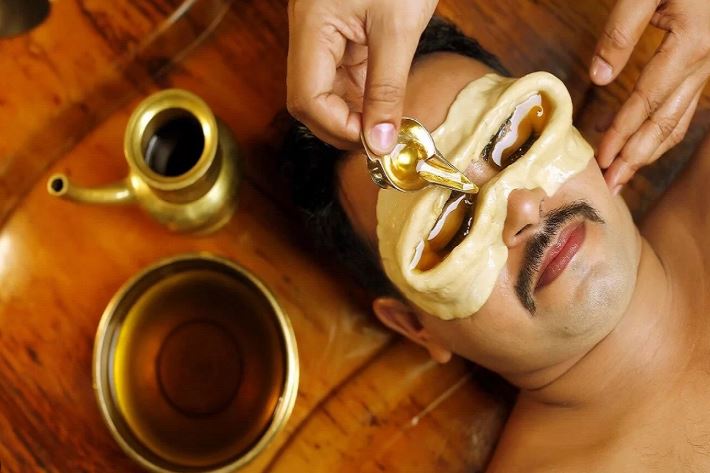The impact of Shalakya Tantra on Beauty - A Review
DOI:
https://doi.org/10.21760/jaims.10.6.47Keywords:
Urdhvanga Chikitsa, Dinacharya, Ratricharya, RitucharyaAbstract
Beauty is not merely a source of happiness but also enhances self-esteem and pride to a certain degree. Beauty is perceived differently by each individual. For ages, beauty has held significant importance in one’s lifestyle. The process of beautification is a vital element of personal care that has been practiced since ancient times. Various methods for skin beautification, particularly concerning the face, eyes, and hair, are key focuses emphasized in Ayurvedic texts, especially within Shalakya Tantra. Shalakya Tantra represents a crucial field of Ayurveda, also known as Urdhvanga Chikitsa, as it pertains to the upper body regions above the clavicle, primarily detailed in Ayurvedic scriptures such as Sushrut Samhita, Charak Samhita, and Ashtang Hridaya. The Mukha encompasses the area from Chibuka to Lalata, which incorporates the complete face, and the ailments that arise in this region, along with its beautification, are addressed through various Kriya Kalpa techniques. In Ayurveda, the idea of beauty is not solely focused on attaining an appealing outward look but also on promoting good health. This journey begins while the child is still in the womb, by adhering to Sadvrittha practices, including Dinacharya, Ratricharya, Ritucharya, alongside the application of medicinal herbs and minerals. In this article, the various methods and procedures for improving the beauty of the face, eyes, and hair are examined, along with internal remedies, Pathya, and Apathya Viveshana. Therefore, the significance of Shalakya Tantra in enhancing the beauty of the face, eyes, and hair will be emphasized through a review of relevant literature. The multiple Kriya Kalpa procedures for the beautification of Mukha (face), Netra (eyes), and Kesha (hair) through adopting methods such as Abyanga, Swedana, Mukha Lepa (face packs), Vidalaka, Anjana, Nethra Parisheka, Shiroabyanga, Shirolepa (hair pack), etc., will be discussed comprehensively.
Downloads
References
Agnivesha, Charaka, Dridhabala. Charaka Samhita: Chikitsa Sthana, Rasayan-Vajikaran Adhyaya. 2nd ed. Varanasi: Chaukhamba Bharati Academy; 2007. p. 35–6. Hindi commentary by Kashiram Shastri and Gorakhnath Chaturvedi.
Vagbhatacharya. Ashtanga Hrudaya Uttarasthana. In: Arunadatta, editor. Sarvanga Sundara commentary. Varanasi: Chaukhamba Sanskrit Series Office; Sarvakshiroga Partisedha, 16.61–65.
Shastri A. Sushruta Samhita Uttartantra: Sarvagatarogavigyaniya Adhyaya. Reprint ed. Varanasi: Chaukhambha Sanskrit Sansthan; 2009. p. 36. Ayurveda Tatva Sandipika Hindi commentary.
Abhaykatyayan. Bhela Samhita: Sarirasthana. Hindi commentary. Varanasi: Chaukhamba Surbharati Prakashan; 2008. 4/4. p. 212.
Shastri KA. Sushruta Samhita Uttaratantra: Aupadravikam Adhyaya. Reprint ed. Varanasi: Chaukhambha Sanskrit Sansthan; 2013. p. 6–11. Ayurveda Tattva Sandipika Hindi commentary.
Sharma AR. Sushruta Samhita Uttar Tantra: Aupdravikam Adhyaya. Reprint ed. Varanasi: Chaukhambha Sanskrit Sansthan; 2013. p. 8. Hindi commentary by Susrutavimarsini.
Shastri A. Sushruta Samhita Uttar Tantra: Aupdravikam Adhyaya. Reprint ed. Varanasi: Chaukhambha Sanskrit Sansthan; 2009. p. 7. Ayurveda Tatva Sandipika Hindi commentary.
Shastri A. Sushruta Samhita Sutra Sthana: Aaturupkramaniya Adhyaya. 35th chapter, 35/12. Reprint ed. Varanasi: Chaukhambha Sanskrit Sansthan; 2009. p. 7. Ayurveda Tatva Sandipika Hindi commentary.
Dar AA, Arumugam N. Lignans of sesame: Purification methods, biological activities and biosynthesis—A review. Bioorg Chem. 2013;50:1–10.
Korac RR, Khambholja KM. Potential of herbs in skin protection from ultraviolet radiation. Pharmacogn Rev. 2011;5:164–73.
Hazra J, Panda AK. Concept of beauty and Ayurveda medicine. J Clin Exp Dermatol Res. 2013;4:178. p. 1–4.















